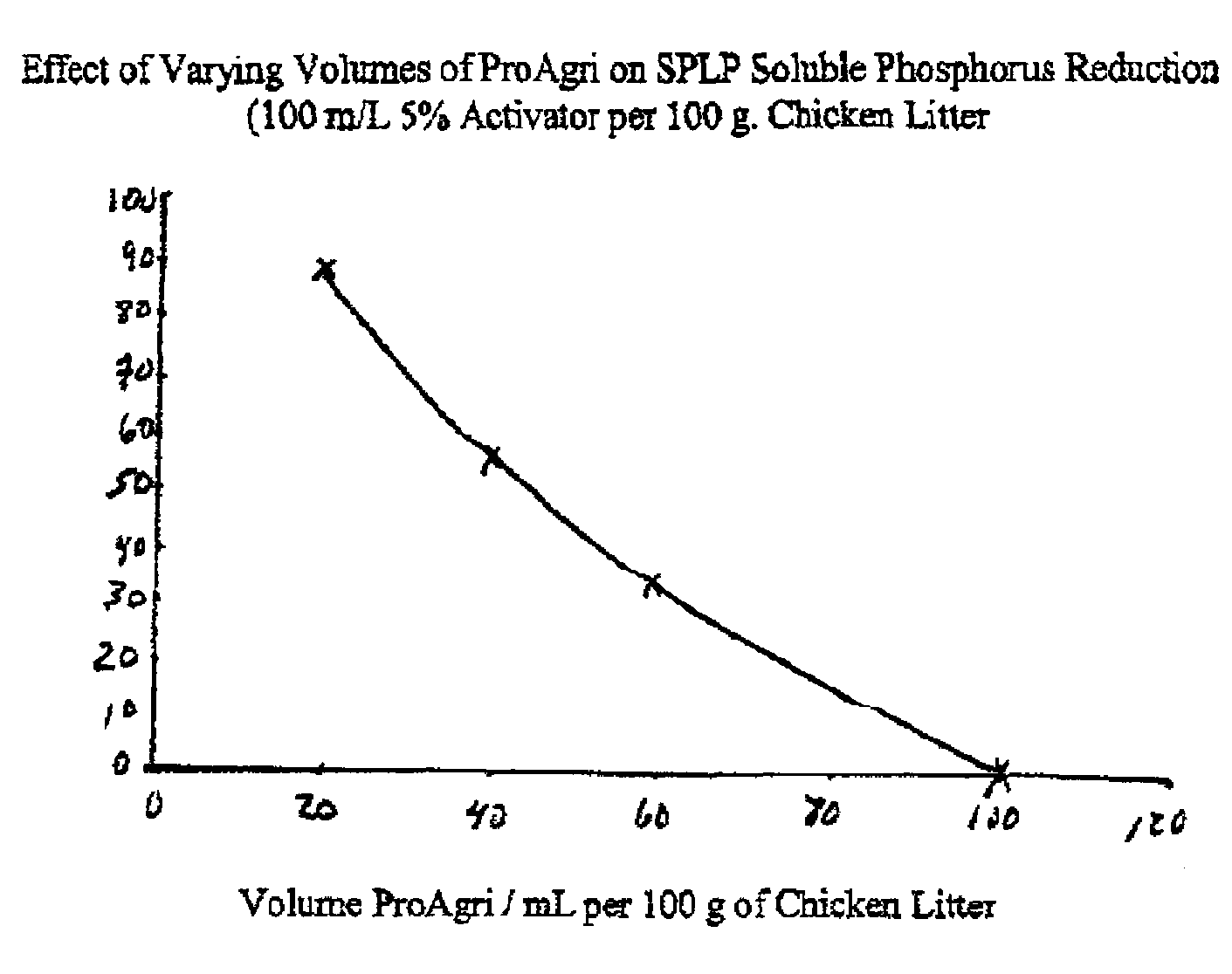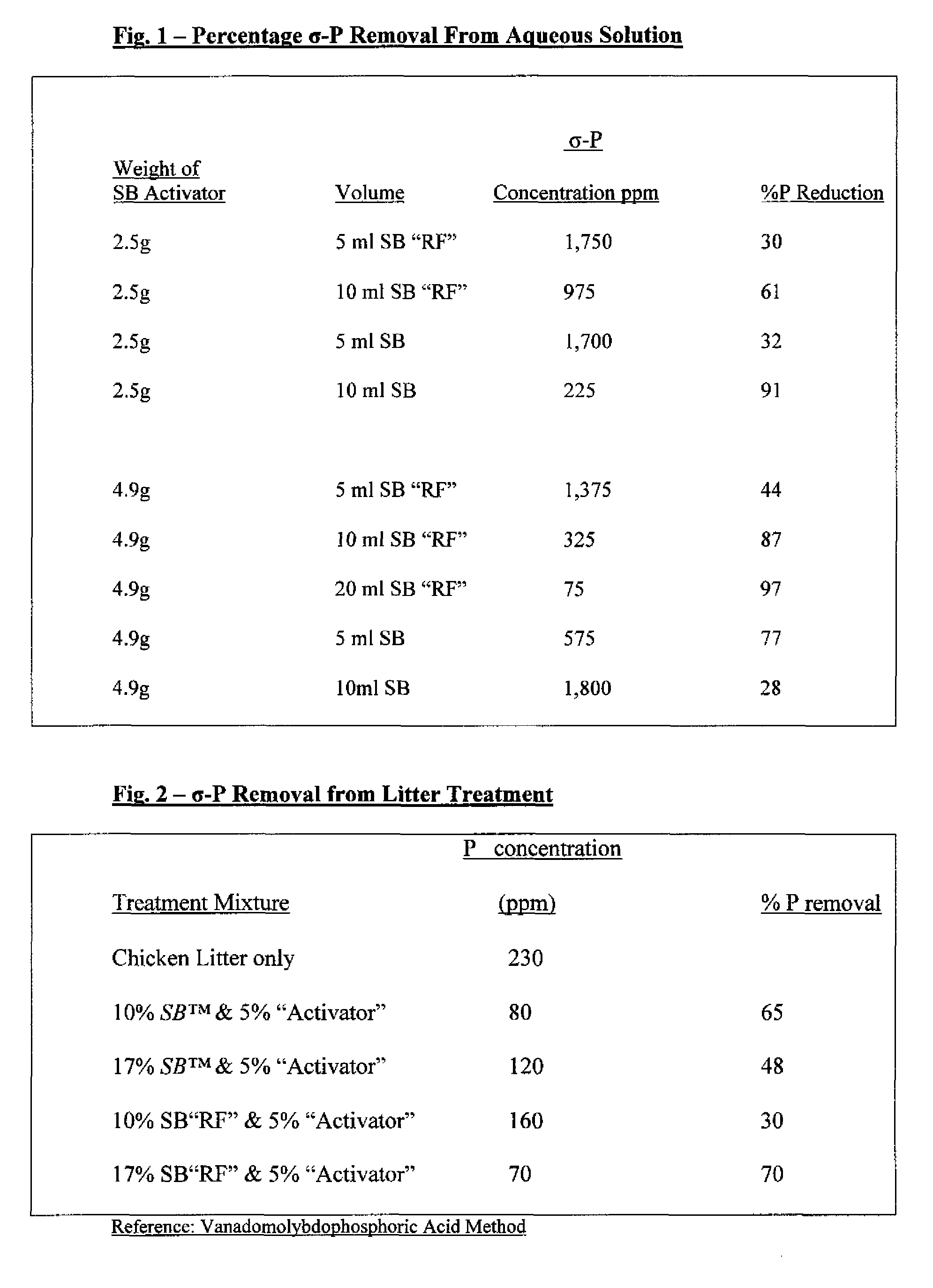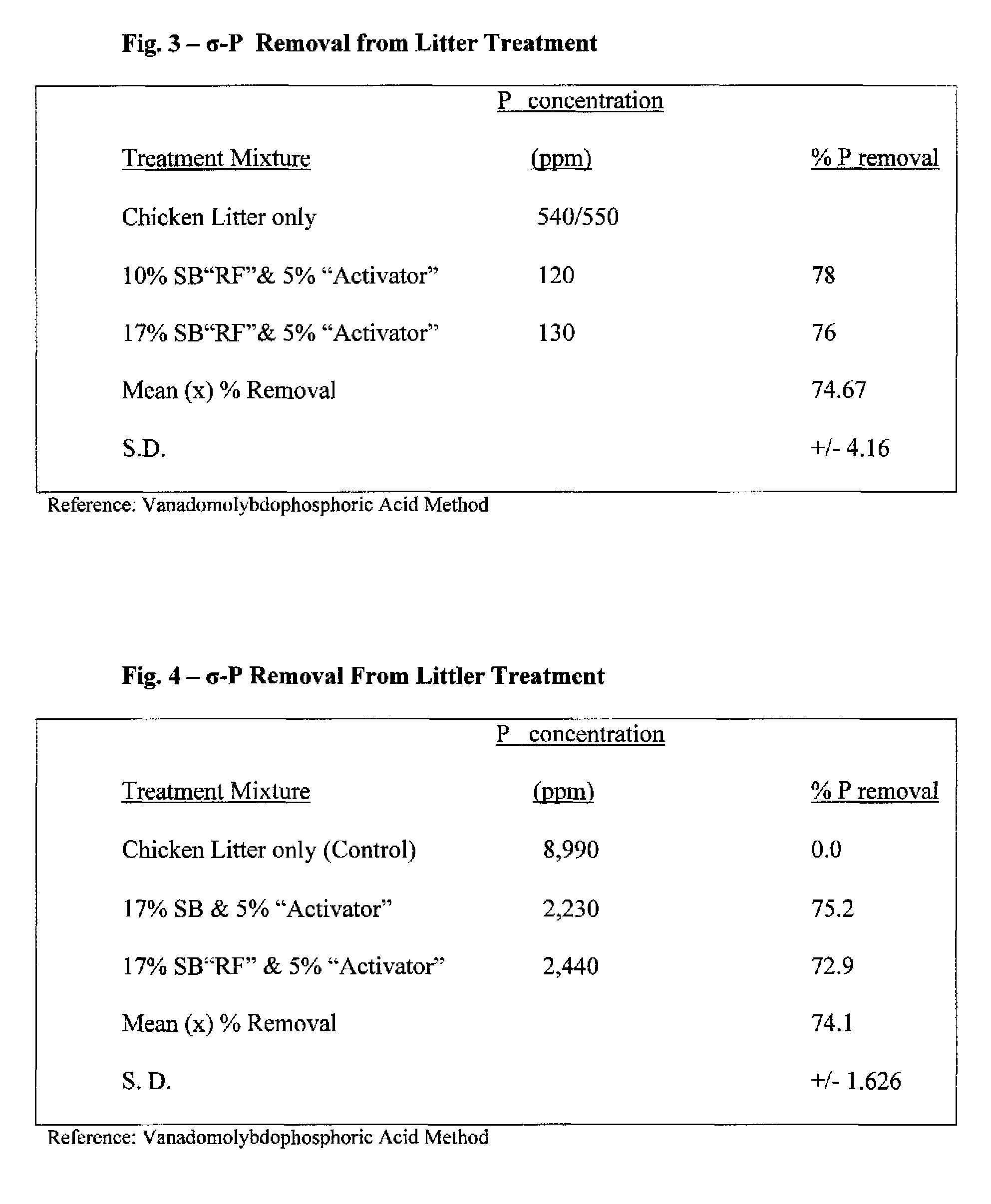System controlling soluble phosphorus
a technology of soluble phosphorus and system control, applied in the field of chemical systems and solutions, can solve the problems of phosphorus incorporated in the complex and rendered unavailable for further reaction with other reagents, and achieve the effects of effectively reducing the content of soluble phosphorus, effective reducing the content of soluble nitrate, and effective reducing the content of arseni
- Summary
- Abstract
- Description
- Claims
- Application Information
AI Technical Summary
Benefits of technology
Problems solved by technology
Method used
Image
Examples
example 1
[0056]It has been shown that a silicate blend (“SB”) binds soluble phosphorus in the presence of SB “Activator”. When the treatment sequence utilizes a natural extract from rice hulls (SB “RF”), a 97% reduction in soluble phosphorus occurs from a concentration of 2500 ppm.
[0057]Previous laboratory studies have sought to determine the relative effects of the binding capacity of SB treated litter. Treatability studies have been conducted, designed and implemented with the intent to investigate whether phosphorus in chicken litter could be prevented from leaching once treatments had been performed to chelate phosphorus and thus retard its removal.
[0058]Materials and Methods
[0059]Initial bench studies were conducted to determine the binding efficiency of SB in aqueous solution. Under these experimental conditions, soluble phosphorus was prepared in concentrations of 2500 ppm and mixed with standard solutions of SB and SB “RF” and tested for soluble phosphorus using the Vanadomolybdophos...
example 2
[0092]The question of whether soluble phosphorus and nitrate binding occurs during the treatment process has been addressed. A series of bench studies have been conducted to determine the binding effects of SB “Activator” formula when applied to chicken litter obtained in de-caking from brooder houses. Variables were introduced to further determine the optimal range for binding phosphorus while maintaining the nutritional demands for nitrate fertilization.
[0093]Materials and Methods
[0094]Multiple samples of chicken litter were treated initially with 5% solutions of Activator at ratios of 1:1 and 1:0.5, respectively. Added variables included the application of 10% solutions of Activator followed by the addition of SB at 20% concentration in the same treatment sequence ratio.
[0095]FIG. 5 illustrates the binding effects of SB and Activator in ratios of 0.5:0.2:1 (Activator:SB: litter) with 10% Activator solution.
[0096]The data in FIG. 6 illustrates the optimal effect of phosphorus bind...
example 3
[0104]One version of the silicate blend solution is made by mixing appropriate amounts of polyol and surfactant, then mixing that solution with an appropriate amount of water. Aqueous alkali metal silicate is then added to the mixture, until the desired concentration of aqueous alkali metal silicate is obtained. One preferred concentration is a solution of between about 20% and 21% aqueous sodium silicate. For example, for making a 275 gallon batch of the silicate blend from a stock of aqueous sodium silicate containing sodium silicate solids of between about 25% and 26%, 1.9 gallons of propylene glycol are mixed with 1.9 gallons of ester of organo-phosphoric acid (such as sold under the T-Mulz brand). That 3.8 gallon mixture is then added to approximately 36 gallons of water, and mixed well. Then about 235.2 gallons of aqueous sodium silicate solution are added and mixed, to yield aqueous sodium silicate solution having a final concentration of between about 20% or 21% (typically a...
PUM
 Login to View More
Login to View More Abstract
Description
Claims
Application Information
 Login to View More
Login to View More - R&D
- Intellectual Property
- Life Sciences
- Materials
- Tech Scout
- Unparalleled Data Quality
- Higher Quality Content
- 60% Fewer Hallucinations
Browse by: Latest US Patents, China's latest patents, Technical Efficacy Thesaurus, Application Domain, Technology Topic, Popular Technical Reports.
© 2025 PatSnap. All rights reserved.Legal|Privacy policy|Modern Slavery Act Transparency Statement|Sitemap|About US| Contact US: help@patsnap.com



